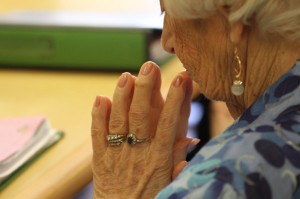 Loneliness has become a distinct social concern in care homes. Over 50 years ago an ethnographer named Peter Townsend (1962) conducted an extensive survey of residential homes in England and Wales and found 44% of men and 49% of women reported loneliness. One would think that with the advances in policy and procedures things would have improved. However recent research reveals that the problem has not only persisted, but become worse.
Loneliness has become a distinct social concern in care homes. Over 50 years ago an ethnographer named Peter Townsend (1962) conducted an extensive survey of residential homes in England and Wales and found 44% of men and 49% of women reported loneliness. One would think that with the advances in policy and procedures things would have improved. However recent research reveals that the problem has not only persisted, but become worse.
A recent US study reveals that over half (55%) of the residents living in long-term care homes report being often or sometimes lonely (Nyqvist, et al., 2013)., and the rates of ‘severe’ loneliness are approximately double that for nursing home residents compared with community-dwelling residents (Victor, 2012). We should be shocked and concerned. Why? Loneliness has been linked with intense emotional suffering, depression, falls, and numerous negative health outcomes, significantly increasing hospital admission rates and health care costs (Victor, 2012). Yet funding continues to focus heavily on medical issues such as the management of physical health conditions. The management of mental health, and in particular the management of loneliness and depression is just as, if not more important.
Activity calendars in care homes, assisted living and retirement homes offer a steady diet of social events, strawberry socials, bingo, bus trips and more. Residents enjoy these activities but are they resorting to ‘social snacking’ in order to satisfy belonging needs? Social snacking is a strategy proposed by Gardner (2005) that comes into play when true social connections are unavailable. It refers to stop gap behaviors such as the use of tangible symbols, e.g. a photograph or an ‘imaginary friend’ e.g. a teddy bear that provides the illusion of connection. Some people appear to turn to these and other indirect social strategies to satisfy their need to belong even though it is an illusion of a connection. Like an actual snack, it is proposed here that although much of the social programming within the long-term care sector can be enjoyable, it lacks nutritious content such as opportunities for meaningful interaction or social connection. Thus, this non-stop activity programming can in some ways mask emptiness of meaning (Katz, 2000). Simply placing residents together in an activity can make the numbers look good but the research indicates we are neither reducing loneliness nor promoting a sense of belonging (McLaren, Gomez, Bailey, & Horst, 2007) and this is tragic and costly in the long run. A key factor is not the extent of social contact but the quality of the contact.
How can meaningful interactions and social connections be fostered among residents? Our research indicates that structured psychosocial support groups are an effective way for residents to engage with each other (Theurer, 2012), including those with congitive impairment and other challenges. These groups can be facilitated effectively by existing staff, support workers, volunteers etc., and even some residents, using a standardized format. Residents have a wealth of experience and have a willingness to help one another if given the opportunity and support. Research tells us that there is a psychosocial and psychological need for contact and empathy for others, and if “other regarding” is inhibited, people will wither and die (Kitwood, 1997).
Imagine a senior living environment where the mission of every resident is to help another that may be suffering. It seems idealistic at first, and certainly not everyone is capable, but given the success mutual support groups have in the community (Heart & Stroke Foundation, Cancer Society, AA etc.) it is worth the effort. The Java Music Club testimonials confirm that through helping others, even if it is just by listening, we help ourselves.
Kristine Theurer, MA (Gerontology), MTA
kristine@javagp.com
References
Gardner, W. L., Pickett, C., & Knowles, M. L. (2005). On the outside looking in: Loneliness and social monitoring. Personality and Social Psychology Bulletin, 31(11), 1549-1560.
Kitwood, T. (1997). Dementia reconsidered: The person comes first. Philadelphia: Open University Press.
McLaren, S., Gomez, R., Bailey, M., & Horst, R. K. V. D. (2007). The association of depression and sense of belonging with suicidal ideation among older adults: Applicability of resiliency models. Suicide and Life-Threatening Behavior, 37(1), 89-102.
Nyqvist, F., Cattan, M., Andersson, L., Forsman, A. K., & Gustafson, Y. (2013). Social capital and loneliness among the very old living at home and in institutional settings. Journal of Aging and Health, 2(1).
Theurer, K., Wister, A., Sixsmith, A., Chaudhury, H., & Lovegreen, L. (In press). The development and evaluation of mutual support groups in long-term care homes. Journal of Applied Gerontology, 1-29.
Townsend, P. (1962). The Last Refuge: A Survey of Residential Institutions and Homes for the Aged in England and Wales. London: Routledge and K. Paul.
Victor, C. R. (2012). Loneliness in care homes: A neglected area of research? Aging Health, 8(6), 637-649.
